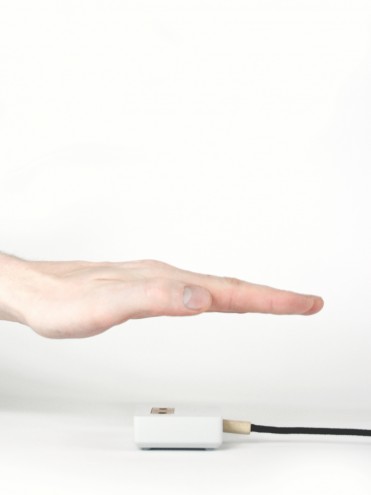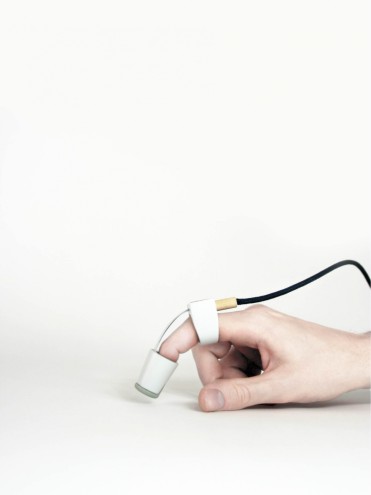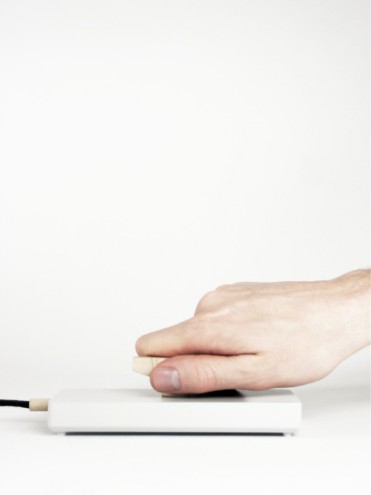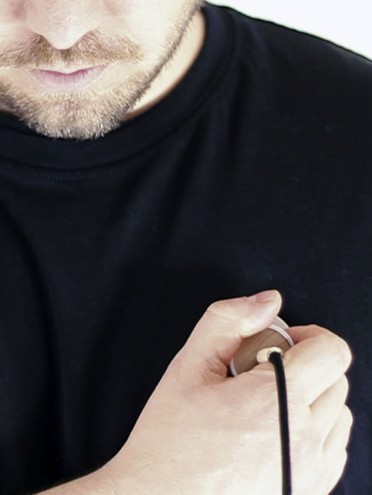Imagine if the waving motion that you do with your arm could be translated into a sound wave… This is the premise of Pieter-Jan Pieters’, a recent Design Academy Eindhoven graduate, project “Sound on Intuition”.
The project consists of five different instruments that translate movements into sound.
The “intuitive” bit works as one might expect it would: if you want to hit a high note, you have to reach high; if you would like to hear a rhythmic sound you need to tap your foot or finger. Similarly, the tempo of the rhythm can be controlled by your heart beat.
As Pieters explains, “all our movements are unique, conscious or unconscious. ‘Sound on Intuition’ captures this uniqueness and transforms it into sound”.
Here is a breakdown on the five different instruments and their functions.
Wob
With a built-in distance sensor, the Wob works by bringing your hand closer or further away from the device, effectively making a wavy sound that mimics the waving motion of one’s hand.
Scan
Since everybody’s handwriting is unique, how about translating it into a unique sound? Pieters’ Scan device allows you to move the instrument over your hand-drawn work to instantly translate it into sound. The Scan is made up of 14 phototransistor sensors.
Heart
Pieters explains that when listening to music one’s heart will always try to match the tempo of the beat of the music, and so the Heart device works by picking up your heartbeat and translating that into its own unique sound.
Kick
Based on similar principles as the above-mentioned devices, the Kick has a piezo sensor that picks up hits, like the tapping of a foot on the ground.
Finger
Every time you tap your finger a piezo sensor picks it up and turns it into sound. The fun part happens when you bend your finger and a flex senor changes the sound, resulting in every hit will be slightly different.












